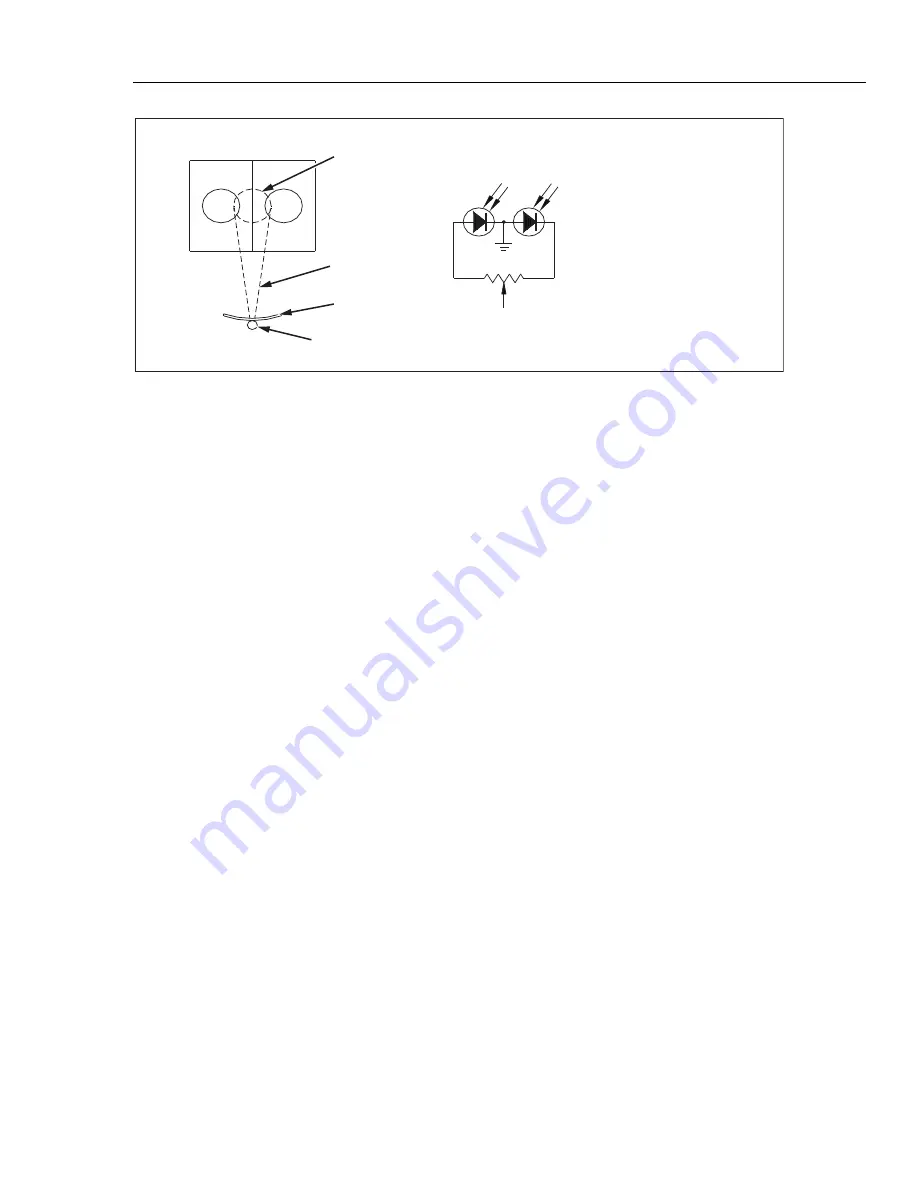
Theory of Operation
Transducer Module
2
2-7
PHOTOCELLS
SHIFTING SPOT OF
LIGHT, SHOWN AT
NULL POSITION
BETWEEN PHOTOCELLS
PHOTOCELLS GENERATE VOLTAGE
ACCORDING TO ILLUMINATION
POTENTIOMETER FOR ZERO-ADJUST
CALIBRATION OF THE QBT GAGE
ERROR SIGNAL TO CONTROL AMPLIFIER IS
ZERO WHEN PHOTOCELLS ARE EQUALLY
ILLUMINATED
BEAM OF LIGHT
REFLECTED FROM
ROTATING MIRROR
MIRROR
ROTATING AXIS
LEFTHAND
RIGHTHAND
glc06.eps
Figure 2-5. Photocell/Light Spot
Sensor Board
A temperature sensor, the quartz Bourdon tube pressure sensor and vacuum sensor are
monitored by the Sensor Board. The Sensor board is also used to control and maintain the
sensor housing at 50 °C.
Linearization Term
As described in the previous section, the relationship between the pressure being
measured and the current required to keep the quartz Bourdon tube in its zero position is
the main principle behind the operation of the PPI’s sensing element.
Ideally this pressure-current relationship would be a linear equation of the form
1
KP
l
=
,
where I is current, k is a constant of proportionality, and P is pressure. However, due to
certain mechanical characteristics of the helical tube and its supporting structure, this
pressure-current relationship is slightly nonlinear. The nonlinear portion of this
pressure-current relationship closely follows the form of a second order polynomial, or
1
2
1
c
bP
aP
+
+
=
where again P is pressure and a, b, and c are coefficients generated during the calibration
procedure as discussed below.
When the user performs a three-point calibration, the PPI’s software creates the three
coefficients based on the user’s zero, mid-point, and full-scale adjustments. From then on,
the nonlinear term given above is subtracted from the total pressure-current curve to
achieve the desired linear pressure-current relationship.
On the 7050i and 7050LP, multiple quartz sensor ranges are used in order to provide the
percent of reading specification. In these instruments, a total of three points per range
with one point shared between two ranges is required. Therefore, for the 7050i, a 5 point
calibration is performed and for the 7250LP, a 9 point calibration is performed to fully
characterize the RUSKA quartz sensors.
Auxiliary Sensors
Auxiliary sensors are sensors such as the oven temperature sensor. These are reference
sensors aligned at the factory and are utilized by the firmware.
Summary of Contents for RUSKA 7050
Page 3: ...7050 Change Language Hold key for 5 seconds mode enter...
Page 4: ......
Page 10: ...RUSKA 7050 7050i 7050LP Users Manual vi...
Page 12: ...RUSKA 7050 7050i 7050LP Users Manual viii 7 1 Packing the PPI 7 3...
Page 18: ...RUSKA 7050 7050i 7050LP Users Manual 1 6...
Page 32: ...RUSKA 7050 7050i 7050LP Users Manual 3 4...
Page 60: ...RUSKA 7050 7050i 7050LP Users Manual 5 14...
















































